Alessandro Farinelli
Advancing Neural Network Verification through Hierarchical Safety Abstract Interpretation
May 08, 2025
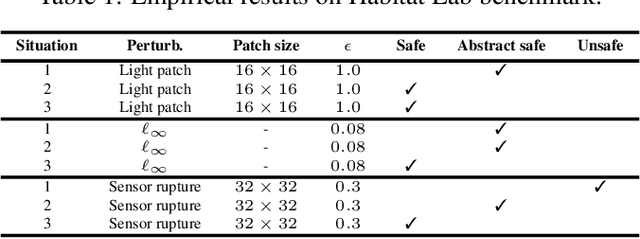
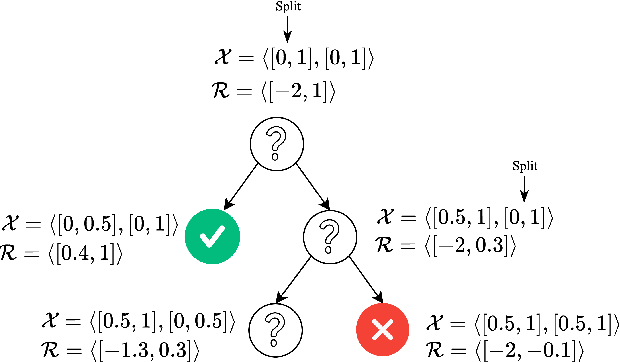

Abstract:Traditional methods for formal verification (FV) of deep neural networks (DNNs) are constrained by a binary encoding of safety properties, where a model is classified as either safe or unsafe (robust or not robust). This binary encoding fails to capture the nuanced safety levels within a model, often resulting in either overly restrictive or too permissive requirements. In this paper, we introduce a novel problem formulation called Abstract DNN-Verification, which verifies a hierarchical structure of unsafe outputs, providing a more granular analysis of the safety aspect for a given DNN. Crucially, by leveraging abstract interpretation and reasoning about output reachable sets, our approach enables assessing multiple safety levels during the FV process, requiring the same (in the worst case) or even potentially less computational effort than the traditional binary verification approach. Specifically, we demonstrate how this formulation allows rank adversarial inputs according to their abstract safety level violation, offering a more detailed evaluation of the model's safety and robustness. Our contributions include a theoretical exploration of the relationship between our novel abstract safety formulation and existing approaches that employ abstract interpretation for robustness verification, complexity analysis of the novel problem introduced, and an empirical evaluation considering both a complex deep reinforcement learning task (based on Habitat 3.0) and standard DNN-Verification benchmarks.
Learning Symbolic Persistent Macro-Actions for POMDP Solving Over Time
May 06, 2025Abstract:This paper proposes an integration of temporal logical reasoning and Partially Observable Markov Decision Processes (POMDPs) to achieve interpretable decision-making under uncertainty with macro-actions. Our method leverages a fragment of Linear Temporal Logic (LTL) based on Event Calculus (EC) to generate \emph{persistent} (i.e., constant) macro-actions, which guide Monte Carlo Tree Search (MCTS)-based POMDP solvers over a time horizon, significantly reducing inference time while ensuring robust performance. Such macro-actions are learnt via Inductive Logic Programming (ILP) from a few traces of execution (belief-action pairs), thus eliminating the need for manually designed heuristics and requiring only the specification of the POMDP transition model. In the Pocman and Rocksample benchmark scenarios, our learned macro-actions demonstrate increased expressiveness and generality when compared to time-independent heuristics, indeed offering substantial computational efficiency improvements.
Designing Control Barrier Function via Probabilistic Enumeration for Safe Reinforcement Learning Navigation
Apr 30, 2025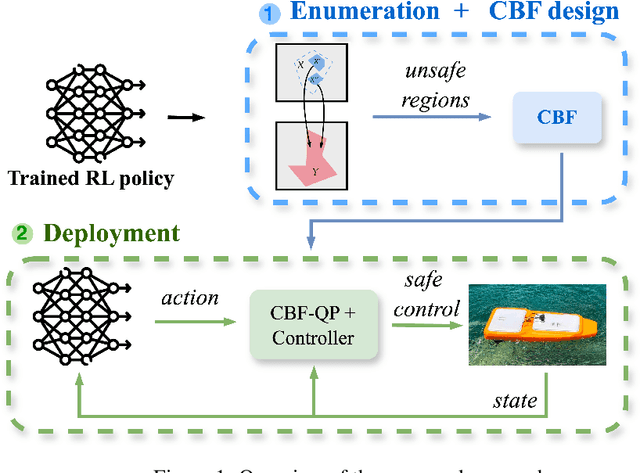
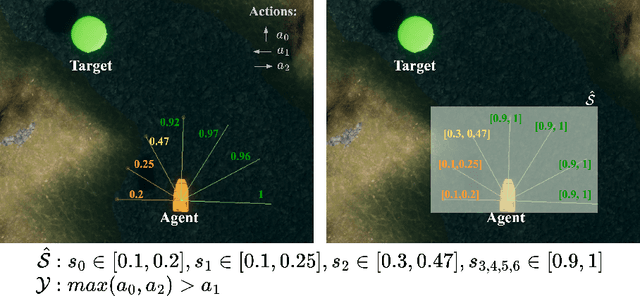


Abstract:Achieving safe autonomous navigation systems is critical for deploying robots in dynamic and uncertain real-world environments. In this paper, we propose a hierarchical control framework leveraging neural network verification techniques to design control barrier functions (CBFs) and policy correction mechanisms that ensure safe reinforcement learning navigation policies. Our approach relies on probabilistic enumeration to identify unsafe regions of operation, which are then used to construct a safe CBF-based control layer applicable to arbitrary policies. We validate our framework both in simulation and on a real robot, using a standard mobile robot benchmark and a highly dynamic aquatic environmental monitoring task. These experiments demonstrate the ability of the proposed solution to correct unsafe actions while preserving efficient navigation behavior. Our results show the promise of developing hierarchical verification-based systems to enable safe and robust navigation behaviors in complex scenarios.
Depth-Constrained ASV Navigation with Deep RL and Limited Sensing
Apr 25, 2025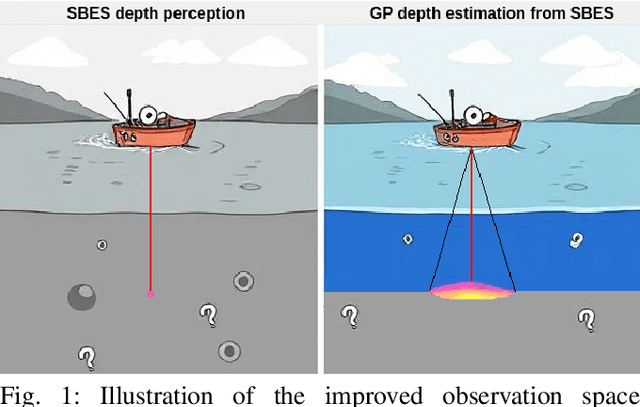
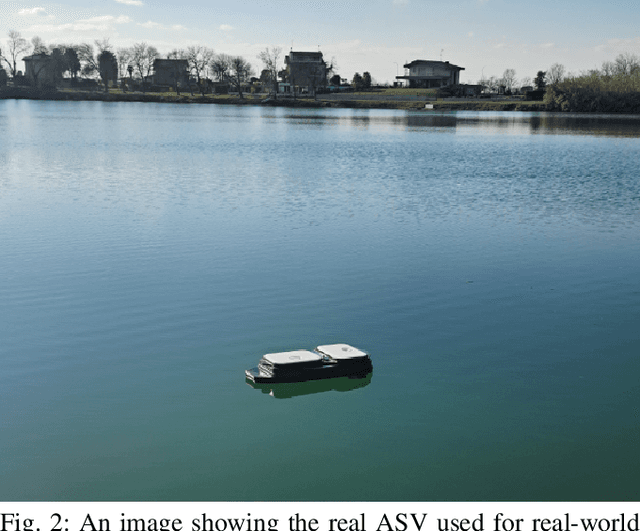
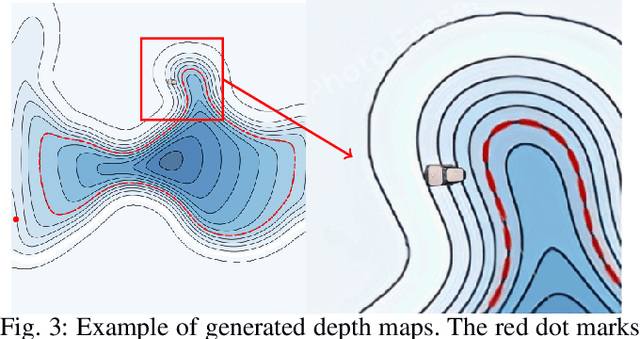
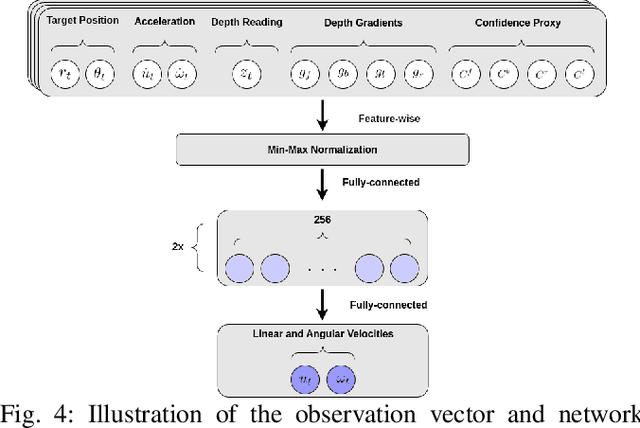
Abstract:Autonomous Surface Vehicles (ASVs) play a crucial role in maritime operations, yet their navigation in shallow-water environments remains challenging due to dynamic disturbances and depth constraints. Traditional navigation strategies struggle with limited sensor information, making safe and efficient operation difficult. In this paper, we propose a reinforcement learning (RL) framework for ASV navigation under depth constraints, where the vehicle must reach a target while avoiding unsafe areas with only a single depth measurement per timestep from a downward-facing Single Beam Echosounder (SBES). To enhance environmental awareness, we integrate Gaussian Process (GP) regression into the RL framework, enabling the agent to progressively estimate a bathymetric depth map from sparse sonar readings. This approach improves decision-making by providing a richer representation of the environment. Furthermore, we demonstrate effective sim-to-real transfer, ensuring that trained policies generalize well to real-world aquatic conditions. Experimental results validate our method's capability to improve ASV navigation performance while maintaining safety in challenging shallow-water environments.
Seldonian Reinforcement Learning for Ad Hoc Teamwork
Mar 05, 2025
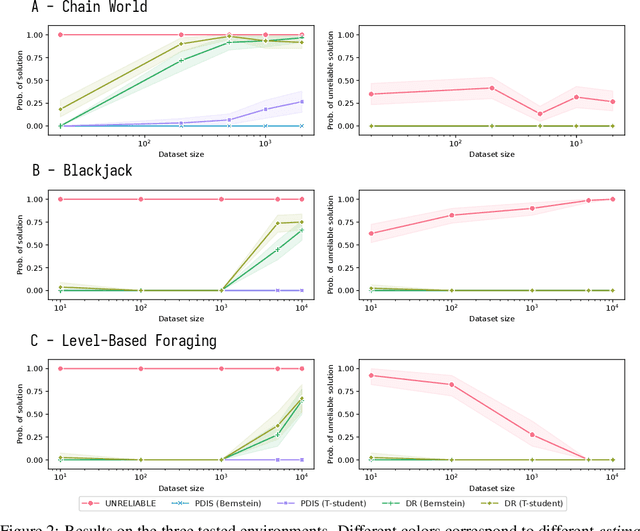
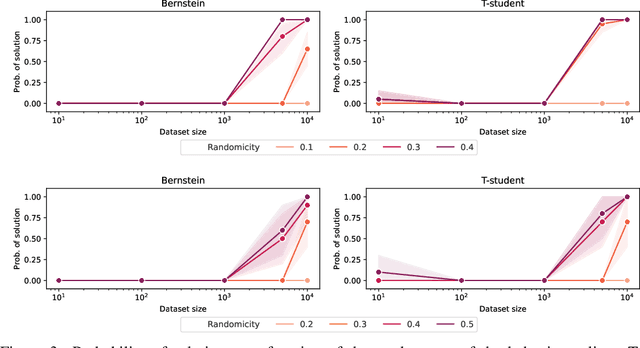
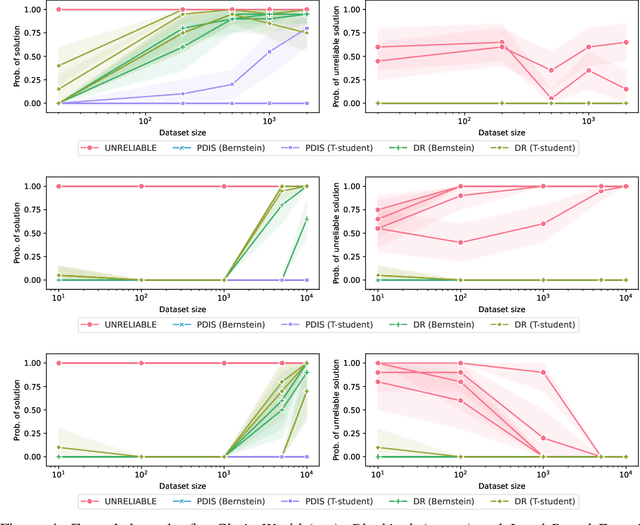
Abstract:Most offline RL algorithms return optimal policies but do not provide statistical guarantees on undesirable behaviors. This could generate reliability issues in safety-critical applications, such as in some multiagent domains where agents, and possibly humans, need to interact to reach their goals without harming each other. In this work, we propose a novel offline RL approach, inspired by Seldonian optimization, which returns policies with good performance and statistically guaranteed properties with respect to predefined undesirable behaviors. In particular, our focus is on Ad Hoc Teamwork settings, where agents must collaborate with new teammates without prior coordination. Our method requires only a pre-collected dataset, a set of candidate policies for our agent, and a specification about the possible policies followed by the other players -- it does not require further interactions, training, or assumptions on the type and architecture of the policies. We test our algorithm in Ad Hoc Teamwork problems and show that it consistently finds reliable policies while improving sample efficiency with respect to standard ML baselines.
Monte Carlo Tree Search with Velocity Obstacles for safe and efficient motion planning in dynamic environments
Jan 16, 2025Abstract:Online motion planning is a challenging problem for intelligent robots moving in dense environments with dynamic obstacles, e.g., crowds. In this work, we propose a novel approach for optimal and safe online motion planning with minimal information about dynamic obstacles. Specifically, our approach requires only the current position of the obstacles and their maximum speed, but it does not need any information about their exact trajectories or dynamic model. The proposed methodology combines Monte Carlo Tree Search (MCTS), for online optimal planning via model simulations, with Velocity Obstacles (VO), for obstacle avoidance. We perform experiments in a cluttered simulated environment with walls, and up to 40 dynamic obstacles moving with random velocities and directions. With an ablation study, we show the key contribution of VO in scaling up the efficiency of MCTS, selecting the safest and most rewarding actions in the tree of simulations. Moreover, we show the superiority of our methodology with respect to state-of-the-art planners, including Non-linear Model Predictive Control (NMPC), in terms of improved collision rate, computational and task performance.
Online inductive learning from answer sets for efficient reinforcement learning exploration
Jan 13, 2025Abstract:This paper presents a novel approach combining inductive logic programming with reinforcement learning to improve training performance and explainability. We exploit inductive learning of answer set programs from noisy examples to learn a set of logical rules representing an explainable approximation of the agent policy at each batch of experience. We then perform answer set reasoning on the learned rules to guide the exploration of the learning agent at the next batch, without requiring inefficient reward shaping and preserving optimality with soft bias. The entire procedure is conducted during the online execution of the reinforcement learning algorithm. We preliminarily validate the efficacy of our approach by integrating it into the Q-learning algorithm for the Pac-Man scenario in two maps of increasing complexity. Our methodology produces a significant boost in the discounted return achieved by the agent, even in the first batches of training. Moreover, inductive learning does not compromise the computational time required by Q-learning and learned rules quickly converge to an explanation of the agent policy.
Collaborative Instance Navigation: Leveraging Agent Self-Dialogue to Minimize User Input
Dec 02, 2024Abstract:Existing embodied instance goal navigation tasks, driven by natural language, assume human users to provide complete and nuanced instance descriptions prior to the navigation, which can be impractical in the real world as human instructions might be brief and ambiguous. To bridge this gap, we propose a new task, Collaborative Instance Navigation (CoIN), with dynamic agent-human interaction during navigation to actively resolve uncertainties about the target instance in natural, template-free, open-ended dialogues. To address CoIN, we propose a novel method, Agent-user Interaction with UncerTainty Awareness (AIUTA), leveraging the perception capability of Vision Language Models (VLMs) and the capability of Large Language Models (LLMs). First, upon object detection, a Self-Questioner model initiates a self-dialogue to obtain a complete and accurate observation description, while a novel uncertainty estimation technique mitigates inaccurate VLM perception. Then, an Interaction Trigger module determines whether to ask a question to the user, continue or halt navigation, minimizing user input. For evaluation, we introduce CoIN-Bench, a benchmark supporting both real and simulated humans. AIUTA achieves competitive performance in instance navigation against state-of-the-art methods, demonstrating great flexibility in handling user inputs.
Rigorous Probabilistic Guarantees for Robust Counterfactual Explanations
Jul 10, 2024Abstract:We study the problem of assessing the robustness of counterfactual explanations for deep learning models. We focus on $\textit{plausible model shifts}$ altering model parameters and propose a novel framework to reason about the robustness property in this setting. To motivate our solution, we begin by showing for the first time that computing the robustness of counterfactuals with respect to plausible model shifts is NP-complete. As this (practically) rules out the existence of scalable algorithms for exactly computing robustness, we propose a novel probabilistic approach which is able to provide tight estimates of robustness with strong guarantees while preserving scalability. Remarkably, and differently from existing solutions targeting plausible model shifts, our approach does not impose requirements on the network to be analyzed, thus enabling robustness analysis on a wider range of architectures. Experiments on four binary classification datasets indicate that our method improves the state of the art in generating robust explanations, outperforming existing methods on a range of metrics.
I2EDL: Interactive Instruction Error Detection and Localization
Jun 07, 2024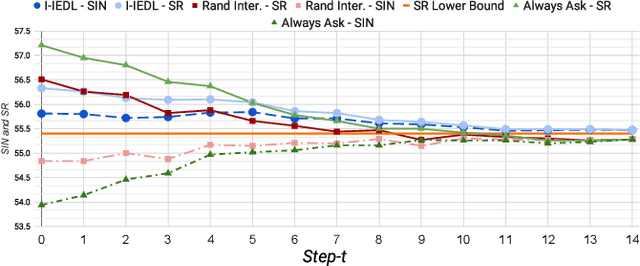
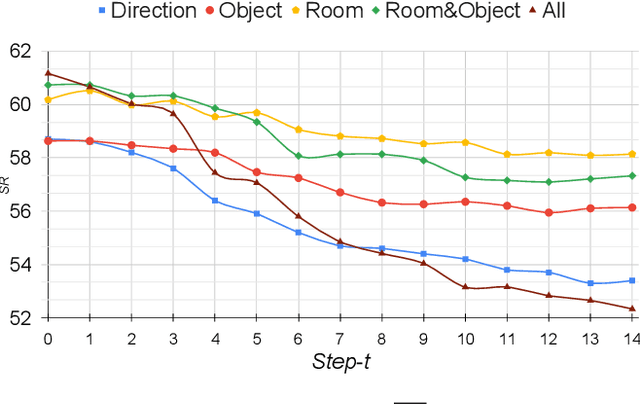

Abstract:In the Vision-and-Language Navigation in Continuous Environments (VLN-CE) task, the human user guides an autonomous agent to reach a target goal via a series of low-level actions following a textual instruction in natural language. However, most existing methods do not address the likely case where users may make mistakes when providing such instruction (e.g. "turn left" instead of "turn right"). In this work, we address a novel task of Interactive VLN in Continuous Environments (IVLN-CE), which allows the agent to interact with the user during the VLN-CE navigation to verify any doubts regarding the instruction errors. We propose an Interactive Instruction Error Detector and Localizer (I2EDL) that triggers the user-agent interaction upon the detection of instruction errors during the navigation. We leverage a pre-trained module to detect instruction errors and pinpoint them in the instruction by cross-referencing the textual input and past observations. In such way, the agent is able to query the user for a timely correction, without demanding the user's cognitive load, as we locate the probable errors to a precise part of the instruction. We evaluate the proposed I2EDL on a dataset of instructions containing errors, and further devise a novel metric, the Success weighted by Interaction Number (SIN), to reflect both the navigation performance and the interaction effectiveness. We show how the proposed method can ask focused requests for corrections to the user, which in turn increases the navigation success, while minimizing the interactions.
 Add to Chrome
Add to Chrome Add to Firefox
Add to Firefox Add to Edge
Add to Edge